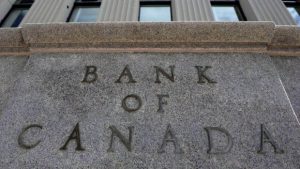Just announced!
OTTAWA — The Bank of Canada kept its key interest rate target on hold Wednesday, but hinted that rate hikes could be coming as it noted the Canadian economy was a little stronger than expected in the first quarter.
The central bank held steady its target for the overnight rate — a key financial benchmark that influences the prime lending rates at the country’s big banks — at 1.25 per cent.
A statement released with the decision noted that exports were more robust than forecast as data on imports of machinery and equipment suggest continued recovery in investment, but also pointed to softer real estate activity into the second quarter as the market “continues to adjust to new mortgage guidelines and higher borrowing rates.”
“Going forward, solid labour income growth supports the expectation that housing activity will pick up and consumption will continue to contribute importantly to growth in 2018,” it said.
The central bank also said global economic activity remains broadly on track, but added that ongoing uncertainty about trade policies is dampening global business investment and stresses are developing in some emerging market economies.
It noted that recent developments have reinforced its view that higher rates will be warranted to keep inflation near its target, but added that it will take a gradual approach and be guided by the economic data.
“In particular, the bank will continue to assess the economy’s sensitivity to interest rate movements and the evolution of economic capacity,” it said.
Economists had predicted the Bank of Canada would keep its key rate on hold Wednesday, but many have suggested the rate may be headed higher later this year.
The central bank’s statement had “a hawkish tone, suggesting the next rate hike is not far off,” said TD Bank senior economist Brian DePratto.
“All told, the positives seem to outweigh the negatives,” DePratto wrote in a note to clients.
“Gone was the reference to ‘caution’ that typified the last few statements. Today’s statement instead chose the term ‘gradual’ to describe the approach to policy adjustments. Importantly, interest rate sensitivity and the evolution of economic capacity remained areas of particular focus.”
The central bank’s decision to keep its trend-setting rate on hold came as inflation sits above the two per cent midpoint of its target range of one to three per cent and core inflation has crept past the two per cent mark for the first time since 2012.
It noted that inflation will likely be a bit higher in the near term than was forecast in its April monetary policy report due to recent increases in gasoline prices, but that it will look through the transitory impact of the fluctuations at the pump.
The central bank has raised its key rate three times since last summer, increases that have prompted the big Canadian banks to raise their prime rates which are used to set the rates charged for variable-rate mortgages and other variable-rate loans.
Its next scheduled interest rate decision is set for July 11 when it will also update its outlook for the economy and inflation in its monetary policy report.
Craig Wong, The Canadian Press